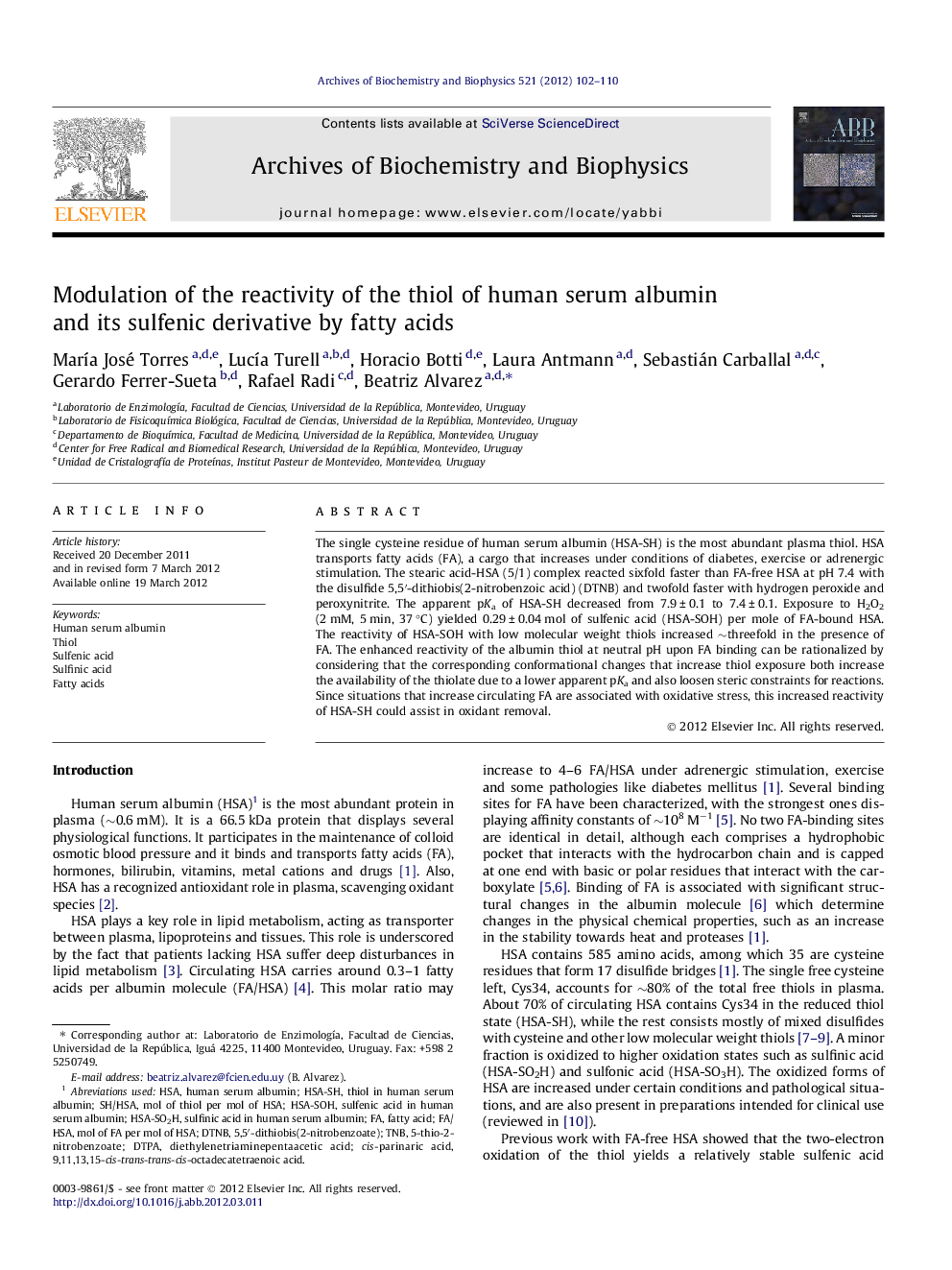| کد مقاله | کد نشریه | سال انتشار | مقاله انگلیسی | نسخه تمام متن |
|---|---|---|---|---|
| 1925575 | 1536393 | 2012 | 9 صفحه PDF | دانلود رایگان |

The single cysteine residue of human serum albumin (HSA-SH) is the most abundant plasma thiol. HSA transports fatty acids (FA), a cargo that increases under conditions of diabetes, exercise or adrenergic stimulation. The stearic acid-HSA (5/1) complex reacted sixfold faster than FA-free HSA at pH 7.4 with the disulfide 5,5′-dithiobis(2-nitrobenzoic acid) (DTNB) and twofold faster with hydrogen peroxide and peroxynitrite. The apparent pKa of HSA-SH decreased from 7.9 ± 0.1 to 7.4 ± 0.1. Exposure to H2O2 (2 mM, 5 min, 37 °C) yielded 0.29 ± 0.04 mol of sulfenic acid (HSA-SOH) per mole of FA-bound HSA. The reactivity of HSA-SOH with low molecular weight thiols increased ∼threefold in the presence of FA. The enhanced reactivity of the albumin thiol at neutral pH upon FA binding can be rationalized by considering that the corresponding conformational changes that increase thiol exposure both increase the availability of the thiolate due to a lower apparent pKa and also loosen steric constraints for reactions. Since situations that increase circulating FA are associated with oxidative stress, this increased reactivity of HSA-SH could assist in oxidant removal.
Figure optionsDownload high-quality image (130 K)Download as PowerPoint slideHighlights
► Changes in the reactivity and pKa of the albumin thiol upon fatty acid binding were investigated.
► In the presence of fatty acids, HSA-SH reacted sixfold faster with the disulfide DTNB at neutral pH.
► Similarly, HSA-SH reacted twofold faster with hydrogen peroxide and peroxynitrite.
► The sulfenic acid of HSA was threefold more reactive in the presence of fatty acids.
► The increased reactivity of HSA-SH can be rationalized by increased exposure and pKa decrease.
Journal: Archives of Biochemistry and Biophysics - Volume 521, Issues 1–2, May 2012, Pages 102–110